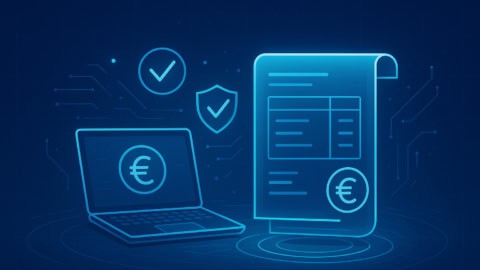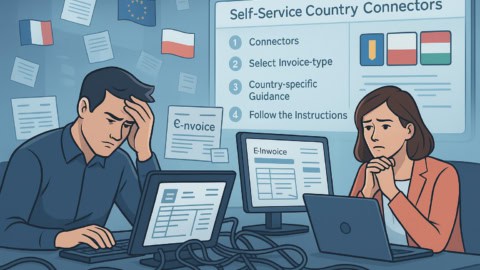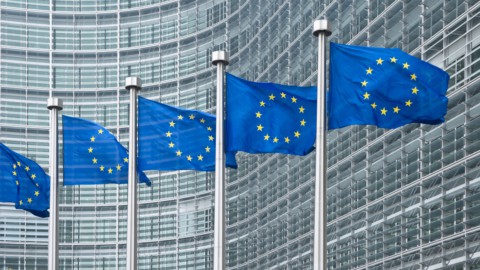Like other EU countries, The Netherlands has implemented legislative changes in recent years to meet EU Directive 2014/55/EU and ensure e-invoices are used for all business-to-government (B2G) procurement moving forward.
In this article we’ll explore the state of play of e-invoicing in The Netherlands and what you need to do to achieve compliance with Dutch e-invoicing regulations.
The growth of e-invoicing in The Netherlands
Due to the introduction of new legislation, especially concerning B2G transactions, the last few years have seen a significant rise in the amount of businesses transitioning to e-invoicing across Europe.
Compared to other European countries, The Netherlands has been slightly ahead of the curve when it comes to e-invoicing adoption and introducing relevant legislation. Following the start of the B2G e-invoicing project in 2009, as early as 2011, around 40% of Dutch companies were reportedly already utilising e-invoicing.
Keen to improve tax processes and secure administrative time and cost savings (estimated to total around EUR 10 million annually), the Dutch government transposed Directive 2014/55/EU into Dutch law on 1 July 2016 in the form of the National Procurement Act. From 1 January 2017 suppliers of the Dutch Central Administration were required to send structured electronic invoices only.
The Netherlands was also able to meet the original deadline of April 2019 for all local contracting bodies to be able to process e-invoices. Further, despite the fact that Dutch law does not dictate that all invoices received by these bodies must be e-invoices (merely that they are able to accept them), many Dutch municipalities have voluntarily included requirements in contracts. As of November 2019 an impressive 95% of these bodies were already using e-invoices.
How to send e-invoices in The Netherlands
Like many other European countries, The Netherlands has chosen to adopt the Peppol framework for document exchange. All Dutch government bodies are now connected to Peppol – either directly or indirectly. For sub-central contracting bodies the use of Peppol is recommended but not mandatory.
The Netherlands’ Local Peppol Authority is the foundation Simplerinvoicing, which is made up of a number of e-invoicing, ERP and accounting software providers.
For suppliers of non-central public bodies there are three ways to send e-invoices…
- Via Peppol. All you need in order to exchange invoices via Peppol is a connection to a Peppol access point provider (such as ecosio).
- Via e-mail. For those whose accounting software is able to create XML e-invoices it is possible to send these as email attachments. It should be remembered that keeping this process in-house requires time and resources, however.
- Via online portal. Those without a provider or EDI capability can manually input data on online portals.
For suppliers of central public bodies there are also three ways to send e-invoices…
- Via Peppol. (See above)
- Via online portal. This portal may be provided by either the government or a service provider.
- Via Digipoort. Direct connection to Digipoort may be a sensible option for businesses with extensive internal IT resources and that are exchanging a high volume of invoices with central Dutch public bodies.
Standards
Currently there are several accepted e-invoicing formats used by public bodies in The Netherlands:
- UBL-OHNL
This format is based on the international standard UBL (or Universal Business Language) and is used for invoices relating to goods and services, but not temporary staff. It is expected that this format will be replaced by the NLCIUS format in 2021. - SI-UBL
This format is used by Simplerinvoicing and is a subset of the larger UBL specification, containing 200 elements. As with UBL-OHNL it is expected that this standard will be replaced by the new Dutch CIUS (Core Invoice Usage Specification) of the new European Standard EN 16931. - SETU (HR – XML)
SETU is an XML standard and an extension of the Dutch CIUS. This standard is specifically designed for the hiring of temporary staff (and services). At present this is the most popular standard used in The Netherlands for B2G e-invoicing.
What is the NLCIUS?
The NLCIUS is a subset of the European Standard EN 16931 for use in The Netherlands.
According to CEF, The Dutch government plans to align the national standard to the European standard “by setting up the NLCIUS on the PEPPOL BIS and having it implemented in the first half of 2021 at the latest”.
This standard should replace the UBL-OHNL and SI-UBL standards.
Dutch e-invoicing requirements at a glance
| STANDARDS | IS E-INVOICING MANDATORY? | METHODS OF SENDING |
|---|---|---|
|
Suppliers of central bodies: Yes – since January 2017Suppliers of non-central bodies: Depends on specific contract |
|
What is the future of e-invoicing and EDI in The Netherlands?
Thanks to the widespread adoption of e-invoicing across the country, The Netherlands has now stopped rollout measures.
Whilst no specific plans are in place yet to mandate the automated exchange of other key document types, it is likely that the next few years will see The Netherlands follow countries such as Italy and Belgium, who have already started to consider implementing regulations relating to e-Ordering. Further, we may also see the introduction of legislation mandating the use of e-invoices for B2B transactions in the near future.
In any case, as more and more businesses gain the ability to exchange structured electronic documents, e-invoicing and EDI capability in general is set to become increasingly integral to supply chain organisations – even those with no involvement with public bodies.
Want more information on e-invoicing in The Netherlands?
At ecosio we have helped thousands of companies to experience the benefits of structured document exchange and know exactly what efficient and reliable e-invoicing involves. If you would like more information on e-invoicing in The Netherlands and how we can help you to experience savings whilst minimising internal effort, please contact us today. We are always happy to answer any questions you may have.
You may also be interested in our blog articles on e-invoicing in…
Are you aware of our free XML/Peppol document validator?
To help those in need of a simple and easy way to validate formats and file types, from CII (Cross-Industry Invoice) to UBL, we’ve created a free online validator.














